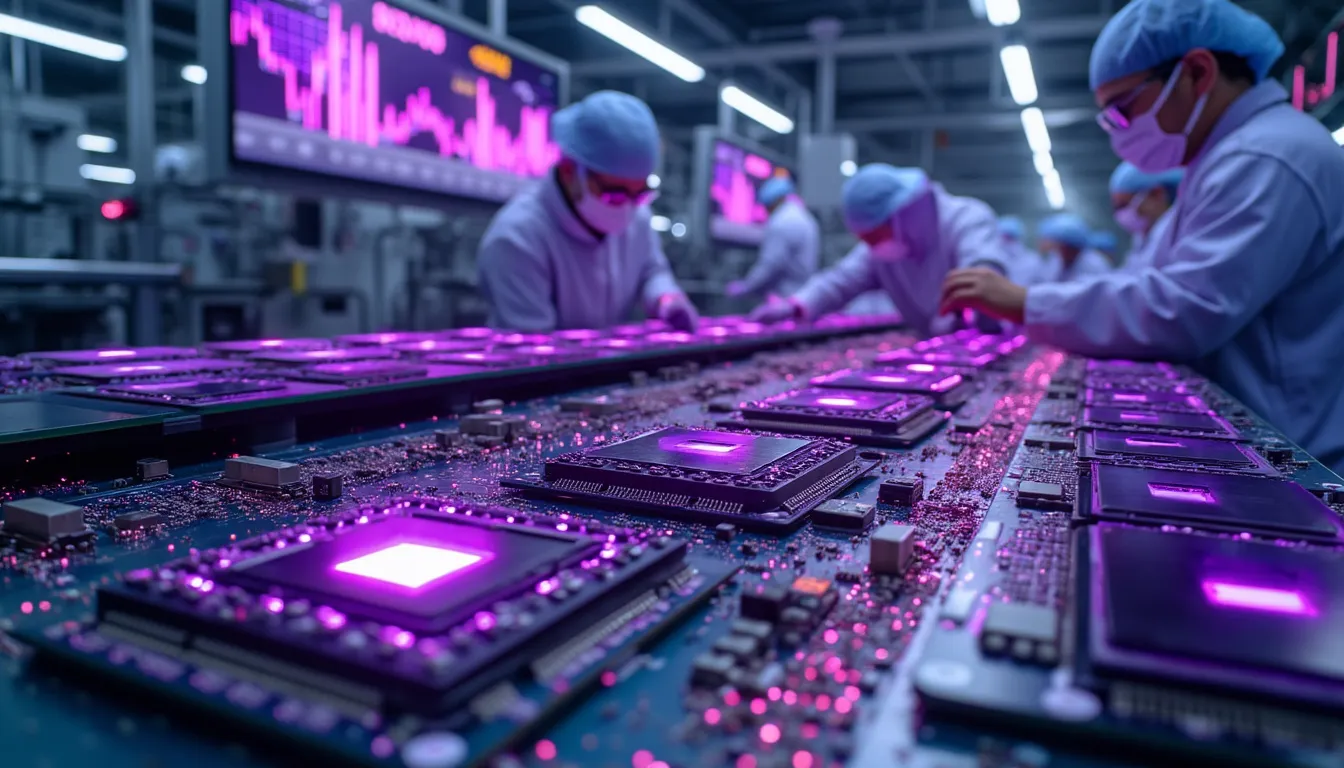A Historic Name Faces a New Inflection Point
Once the unassailable titan of the semiconductor world, Intel Corp (INTC) finds itself at the forefront of today’s sector laggards. With a staggering intraday drop of -9.24% and volumes surging over 207 million shares—nearly ten times its typical daily activity—Intel’s sharp decline is commanding the full attention of investors. The decline comes on the heels of major announcements: a sweeping restructuring plan, a surprise move to spin off its networking division, and troubling signals from management about the pace and pain of its turnaround. As the broader tech sector posts modest gains, Intel’s outsized slide is a stark outlier, and the details behind this move offer crucial lessons for investors examining the future of legacy chipmakers in a rapidly shifting landscape.
Key Takeaways
One of the day’s top sector laggards: INTC down -9.24%, trading at $20.48 (vs. previous close $22.63); intraday volume exceeds 207M shares.
Major corporate restructuring: Intel to separate its networking and communications unit as a standalone company—potentially inviting outside investment.
Turnaround uncertainty: Q2 earnings show flat revenue ($12.9B YOY), but management signals more layoffs and acknowledges execution risk.
Management realism: New CEO Lip-Bu Tan is candid about the “grim impact” of course correction, warning of continued pain before potential recovery.
Analyst sentiment: No major upgrades or downgrades reported today, but growing skepticism in the market on Intel’s ability to execute its turnaround.
Navigating Intel’s Reset: Context for the Downturn
Intel’s New Strategy—And the Cost of Change
Intel’s story is one of reinvention under duress. Once the undisputed leader in CPUs and foundry technology, the company has struggled in recent years to keep pace with nimble rivals in both PC and server spaces—most notably AMD and Nvidia. Today’s plunge is not merely the result of a bad quarter; it’s the market’s reaction to a fundamental shift in the company’s ambition and structure.
On Friday, Intel announced it would spin off its networking and communications segment into a standalone business—a move intended to sharpen focus on core competencies and potentially unlock value by seeking outside investors. According to a Reuters report:
“Intel said on Friday it planned to establish its networking and communications business as a stand-alone company and has begun the process of identifying investors, as new CEO Lip-Bu Tan looks to streamline the struggling chipmaker.” (Reuters)
This marks a dramatic course correction. The networking division, once touted as a growth engine, is now being shed to help the company focus on its embattled core businesses—namely, x86 CPUs and a nascent but high-stakes foundry business.
Q2 Earnings: Flat Revenues, Rising Concerns
Intel’s Q2 numbers offered little solace. Revenue was flat at $12.9 billion YOY, but the earnings call was dominated by talk of restructuring, layoffs, and the mounting headwinds facing the company. A memo from CEO Lip-Bu Tan, cited by Fast Company, captured the tone:
“In the midst of an ongoing turnaround effort, Intel Corp. reported $12.9 billion in revenue as part of its second-quarter financial results on Thursday, matching year-over-year (YOY).” (Fast Company)
More layoffs are expected as part of the effort to streamline operations—a clear sign that the turnaround will bring significant pain before any hope of gain.
Foundry Ambitions Collide With Reality
A key part of Intel’s long-term strategy has been to transform itself into a competitive semiconductor foundry—offering manufacturing services to third parties in hopes of clawing back ground lost to TSMC and Samsung. However, the latest Seeking Alpha analysis is blunt about the risks:
"Intel Corporation's latest Q2 earnings have embedded several bombshell updates to its turnaround strategy. This includes an aggressive restructuring roadmap for both Intel Products and Intel Foundry that's poised to exacerbate already elevated execution risks ahead. The uncertain operating set-up is further compounded by stiffening competition and management's acknowledgement of adverse tariff implications to Intel's earnings outlook." (Seeking Alpha)
The company’s decision to split off non-core assets underscores just how challenging the foundry path has become, with competition intensifying and macro headwinds—such as trade tariffs—threatening margin improvement.
Performance Snapshot: A Day of Historic Volume and Volatility
Metric | Value |
|---|---|
Price | $20.48 |
Change % | -9.24% |
Previous Close | $22.63 |
Intraday Volume | 207,741,151 |
Today’s volume and price action are not just outliers; they are symptomatic of deep uncertainty about Intel’s future. The outsized volume signals both institutional repositioning and a possible capitulation among retail holders.
Analyst and Market Sentiment: Caution Reigns
While no major analyst upgrades or downgrades have surfaced today, the tone from the sell-side is increasingly skeptical. The market is signaling that faith in Intel’s ability to execute a turnaround successfully is waning. Management’s frankness about execution risk and further layoffs only adds to the caution. Investors are left weighing whether the company’s break-up and renewed focus can generate the innovation and profitability needed to reclaim its historic role in the sector.
Macro and Sector Context: Intel as a Bellwether for Legacy Tech
Intel’s struggles today are a microcosm of broader challenges facing legacy technology giants. The chip industry is in the midst of a generational shift toward AI, custom silicon, and global supply chain realignment. Intel’s decision to streamline and seek outside capital for non-core units is reflective of similar moves across the industry, from IBM’s spin-off of its managed infrastructure business to HP’s historic split.
Yet, what makes Intel’s situation unique is the sheer scale and speed of the change required. CEO Lip-Bu Tan’s memo, paired with the company’s aggressive moves, signals a willingness to confront hard truths. The market’s reaction today shows just how high the stakes are: investors are demanding concrete results, not just promises of future growth.
The Road Ahead: Pain Before Gain?
Intel’s sharp decline today is more than just a reaction to a single earnings print or a corporate restructuring. It is a referendum on the company’s ability to adapt, survive, and eventually thrive in an industry that punishes complacency and rewards agility. For investors, the lesson is clear: legacy leaders can fall swiftly when the pace of change outstrips their ability to execute.
Intel’s willingness to make tough decisions—spinning off divisions, embracing layoffs, and seeking new investors—may eventually position it for recovery. But as of today, the market is unconvinced. The coming quarters will be pivotal, with execution at the heart of the company’s prospects.
Conclusion: Intel’s Reckoning Is a Sector Wake-Up Call
Intel’s -9% plunge and record volume are a reminder that even the most storied names can become sector laggards overnight when strategic execution falters. For investors, the company’s reset is both a risk and, potentially, a future opportunity—should the new management team deliver on its promises. Until then, the pain is real, and the market’s skepticism is justified. As the tech sector continues to evolve, today’s Intel is a case study in the perils and potential of corporate reinvention.

.svg)
.svg)
.svg)
.svg)

.svg)

.svg)
















